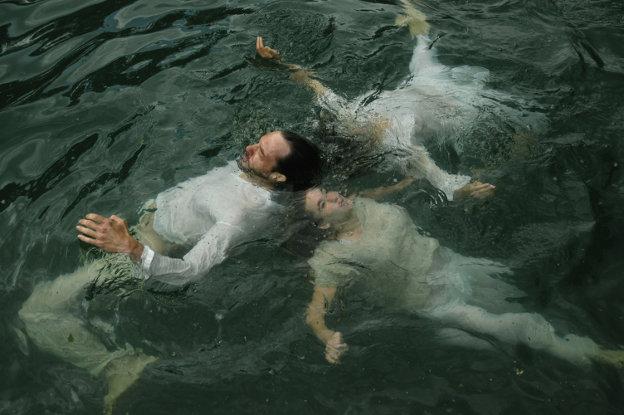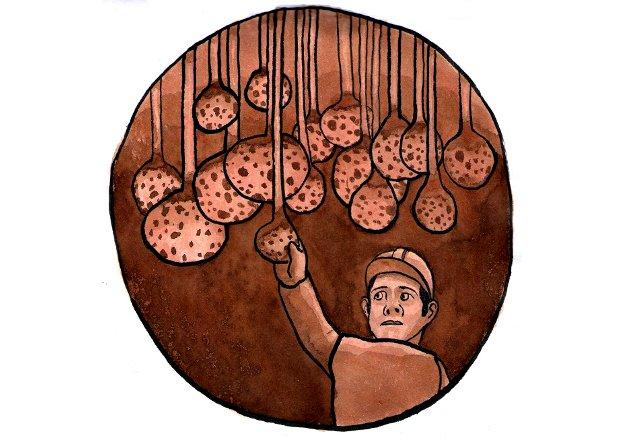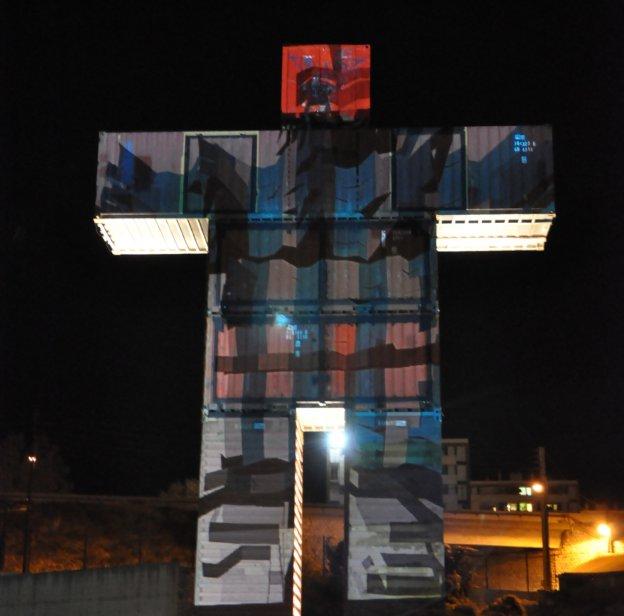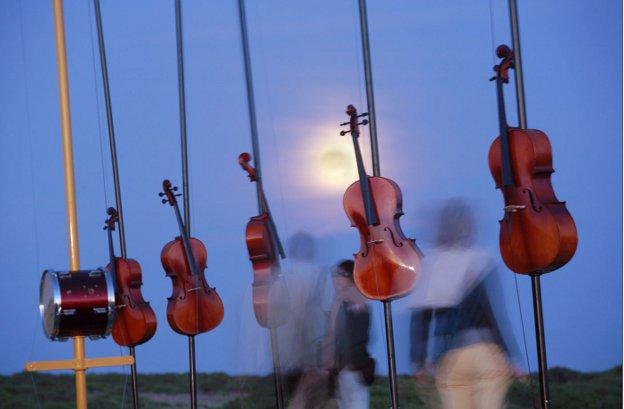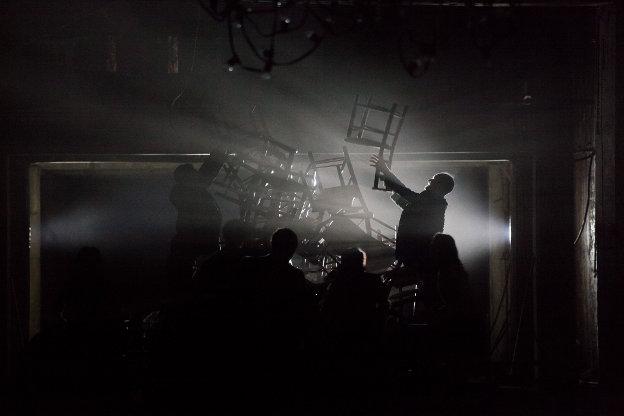
Overworlds & Underworlds was a large site-specific project for the Cultural Olympiad created by the Quay Brothers working in collaboration with Leeds Canvas, a consortium of local arts groups. It mixed installation, sculpture, film, dance performance, and, above all else, atmosphere.
The Underworld part of the event took place in Leeds’ Dark Arches, an amazing subterranean space where underground rivers run below brick-lined gothic arches which stretch into the distance. The subtle lighting emphasised the fact that it was difficult to see just how big the space actually was. You walked from arch to arch, and they contained a mixture of dance performance and small installations by the Quays. The story of Orpheus and Eurydice hung heavily in the air.
The Quay Brothers’ contributions were lovely – an evocative series of small exhibits in glass cases which featured an insect which a malignant sea-anemone like parasite had just burst out of, twisted seed pods which might have supplied the parasite, and a small almost vegetal figure whose sexuality was ambiguous at best, as well as excepts of a trademark black and white film where sensual changes of lens focus and lighting provide the narrative.
However, I wondered how much of an artistic overview they really had on this? It looked like they made their bits independently, supplied the ideas for what they wanted and left it with a production company to put it together.
The dance pieces exploited the spaces and looked like out-takes from the Quay’s Instituta Benjamenta feature film, but would have been more magical if the aluminium scaffolding used to hang the lights had been integrated more effectively into the surroundings or indeed completely hidden from view. Rock and roll packing crates lying around the place don’t help transport you to an alternative world either.
One dance piece demonstrated that what might look good as a short inscrutable stop-motion animation film where very little is going on bar flickering camera movements and changes of perspective don’t translate well into performance unless a lot more thought is put into it.
The Overworld part of the event took place in the pedestrianised streets and featured marching silver bands, dance, and shop window installations.
The mass dance piece accompanied by a local silver band was very effective. The costumes were austere and it looked like an age-old ritual as much as a modern piece of choreography, helped by the overall informal presentation.
The large sculptural boat in Briggate was awful. I can imagine that the maquette that the Quays supplied was exquisite but scaling it up and rendering it in different, inappropriate materials made it look like something from a Kinder egg. If they are going to attempt that Royal de Luxe imaginary realism approach where the object has smashed into the pavement then at the very least the flagstones displaced by the impact need to match up to the real flagstones on the pavement. It looked like what it was – a quick visit to a skip whose contents had been dumped on the pavement underneath the boat.
It was the same with the big pylon protruding out of one of the built-up waterways threading through the city centre. It’s all very well letting the metal rust a bit, but if the bolts holding it together are still shiny and in several places are too long for the job it just looks like a theatre set rather than a mysterious intervention.
The Quay’s films and installations show a great feeling for and sensitivity toward materials; these large sculptures didn’t. Their films create obsessively imagined worlds where nothing is left to chance. Much of this event revealed too much of what was behind the scenes.
One installation in a shop window just looked half-hearted and done the night before its jokey, flimsy and feeble content emphasised by the heartfelt blues song by Charlie Patton it was supposed to be a response to.
With the Arts Council pushing its ‘Great Arts for Everyone’ agenda down our throats and encouraging groups to work outside, I fear we are going to get more of these projects which contain good moments but which overlook the attention to detail which makes outdoor work really come alive in the public’s imagination. The public are far more perceptive than elements of this project gave them credit for.
www.overworldsandunderworlds.com

